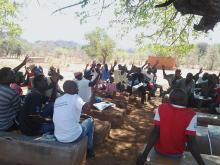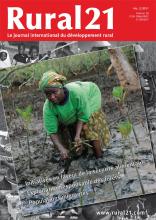Land Library Search
Through our robust search engine, you can search for any item of the over 73,000 highly curated resources in the Land Library.
If you would like to find an overview of what is possible, feel free to peruse the Search Guide.
/ library resources
Showing items 1 through 9 of 15.Land area of 3131.5451 hectares in Ou Chum district, Ratanakiri province has downsized from Forest Cover 2002 and reclassified as “State Private Land” for granting purpose as communal ownership to 4 Krung indigenous communities in Puy commune, Ou Chum district, Rattanakiri province.
Land area of 846.8997 hectare in Ou Chum district, Ratanakiri province has downsized from Forest Cover 2002 and reclassified as "State Private Land" for granting purpose as communal ownership to 165 families of Kreung indigenous community on 20 land parcels including 10 parcels for residential, 1
Indigenous Peoples and local communities hold a large share of the world’s land area under customary systems. However, there is a tremendous gap between what is held by communities in practice and what is formally recognised by governments.
Marked power imbalances often result in communities losing out in use conflicts over their territories and resources. This applies in particular to extractive industries and infrastructure projects.
Land area of 605.8134 hectare in Ou Chum district, Ratanakiri province has downsized from Forest Cover 2002 and reclassified as "State Private Land" for granting purpose as communal ownership to 96 families of Tumpoun indigenous community on 16 land parcels including 07 parcels for residential, 0
Land area of 1496.3127 hectare in Ou Chum district, Ratanakiri province has downsized from Forest Cover 2002 and reclassified as "State Private Land" for granting purpose as communal ownership to 205 families of Kreung indigenous community on 21 land parcels including 02 parcels for residential,
Providing extension and advisory services is expensive. There are salaries to be paid, transportation and operational funds to be provided, buildings to be rented or built, demonstration plots to maintain, and continued education to be offered to the extension staff.
L’urbanisation est souvent considérée comme ayant des effets néfastes sur le développement rural. En fait, c’est tout le contraire.
The sheer number of refugees from Zimbabwe puts a heavy burden on the province of Limpopo in South Africa. These new arrivals strain the already weak structure of the local labour market. The result is frustration and bitterness for local people.






